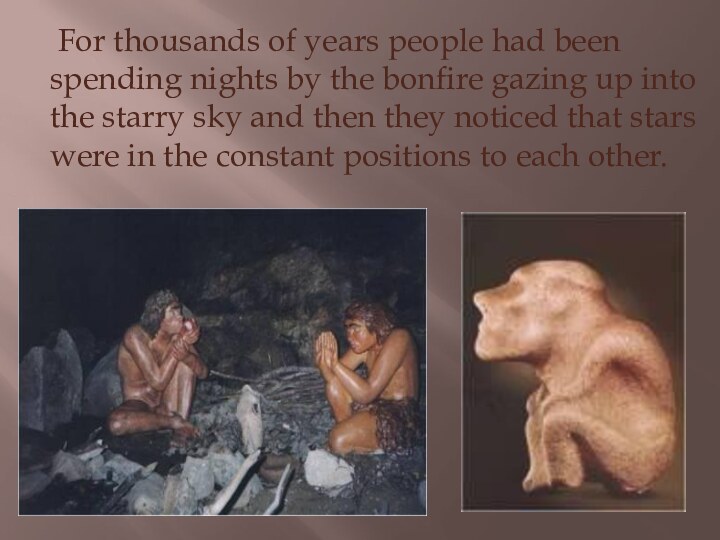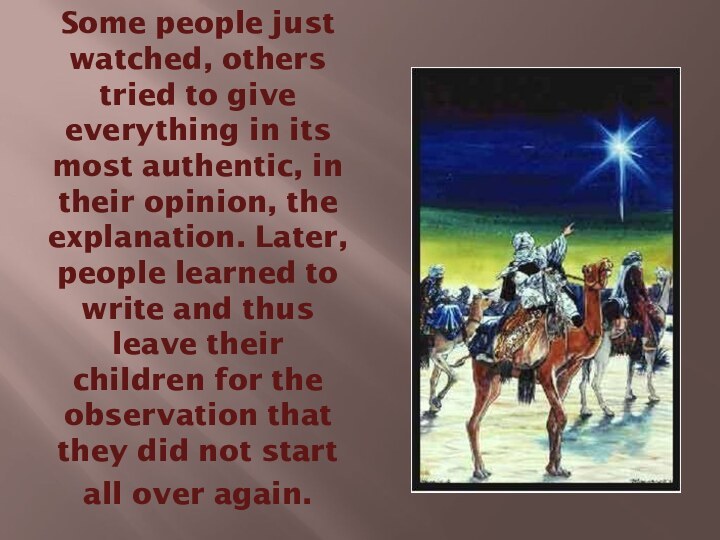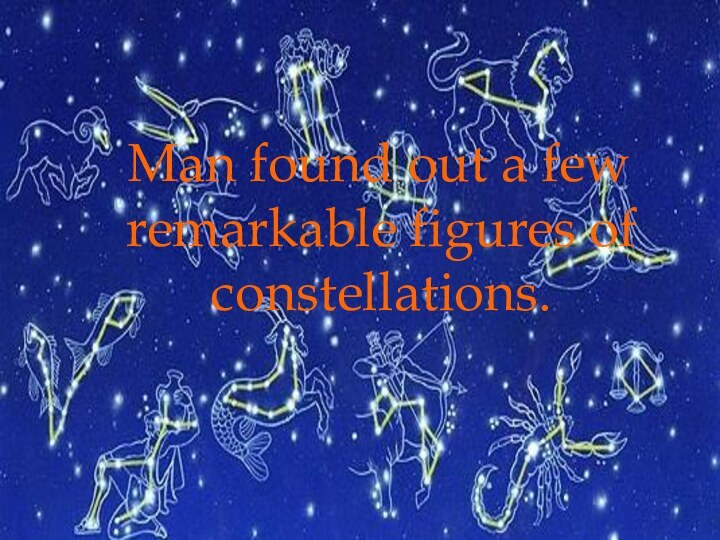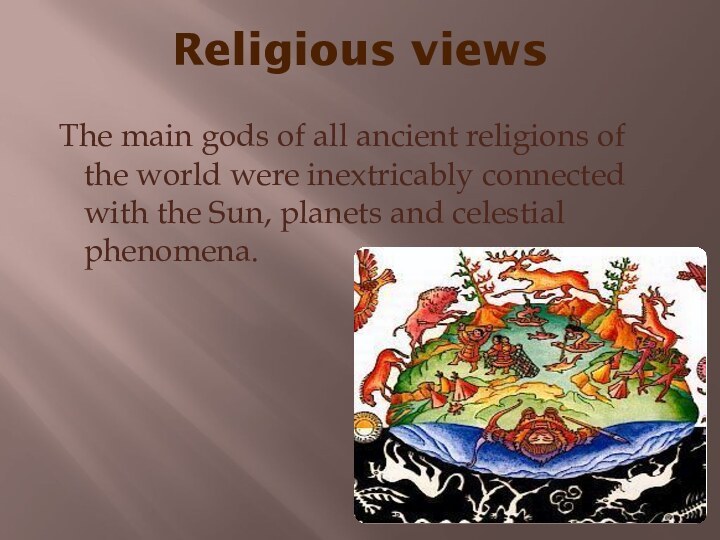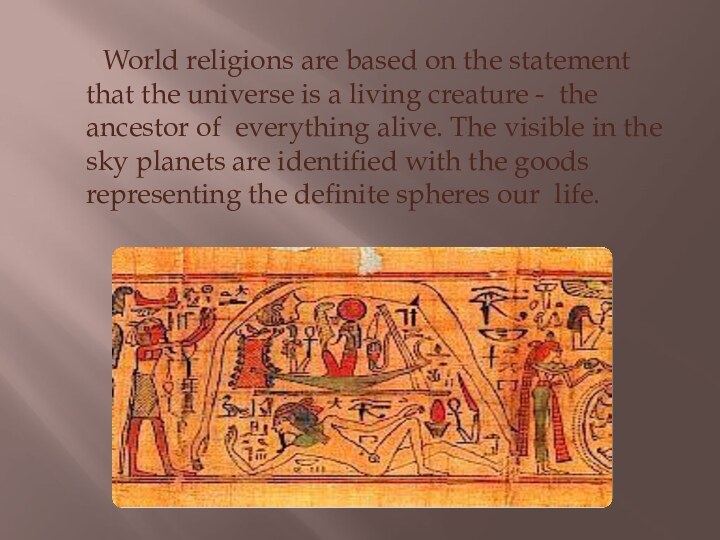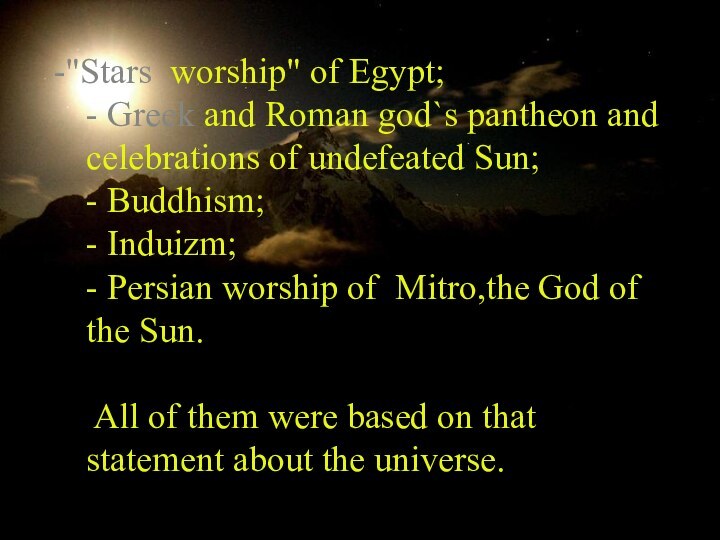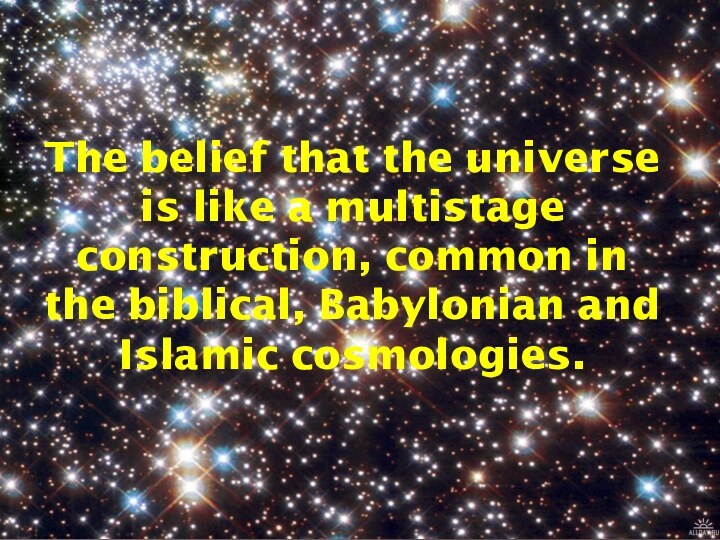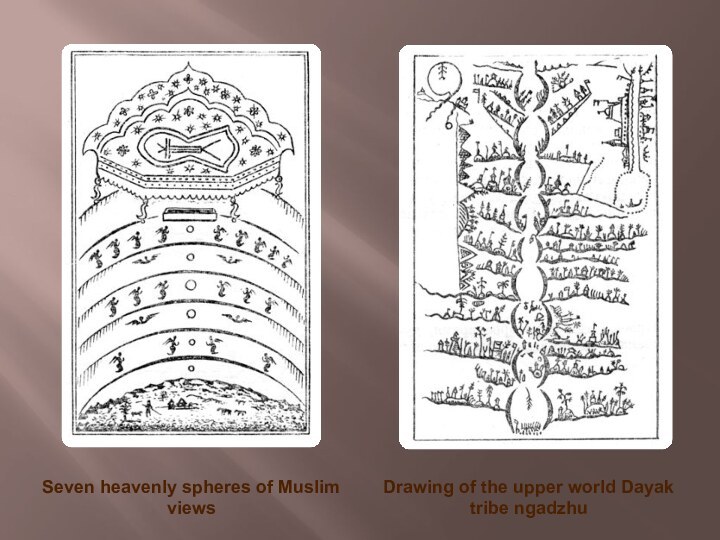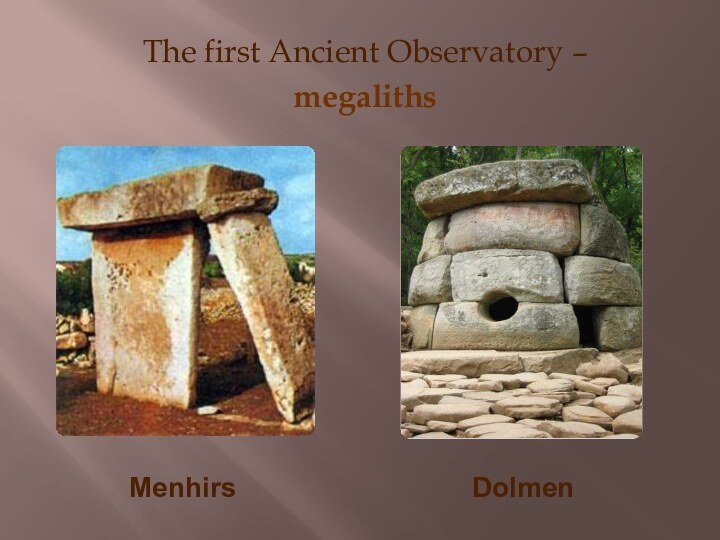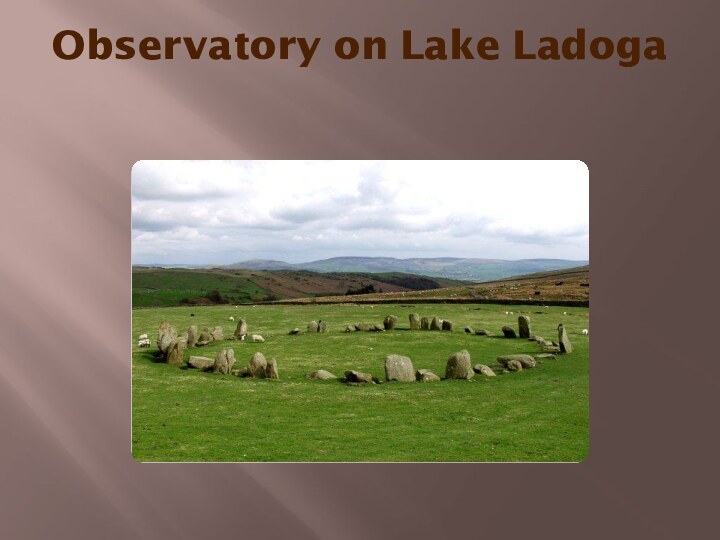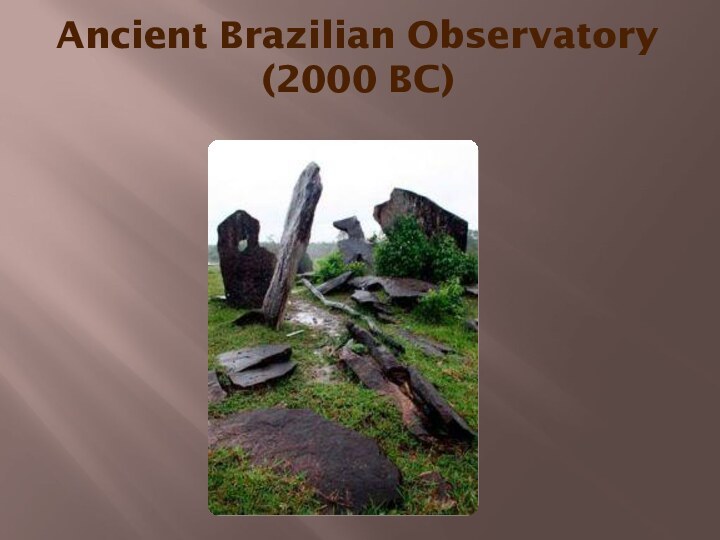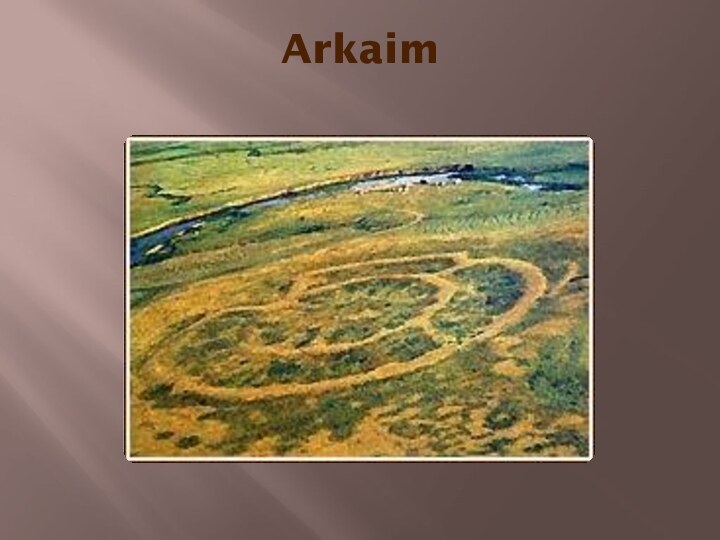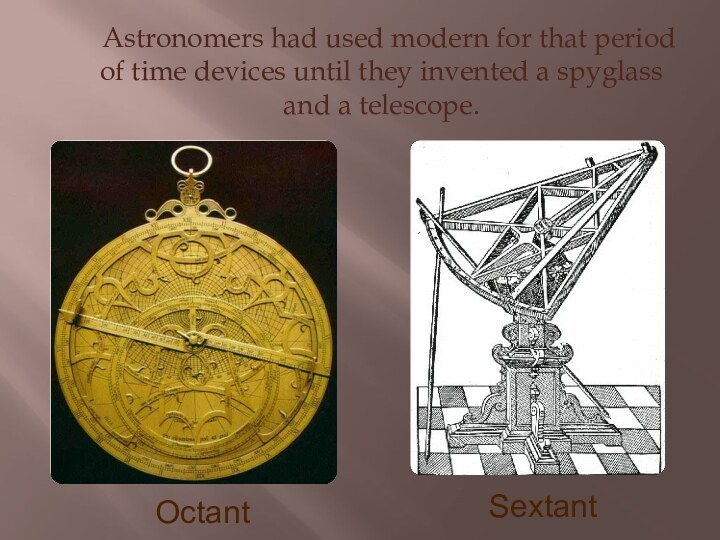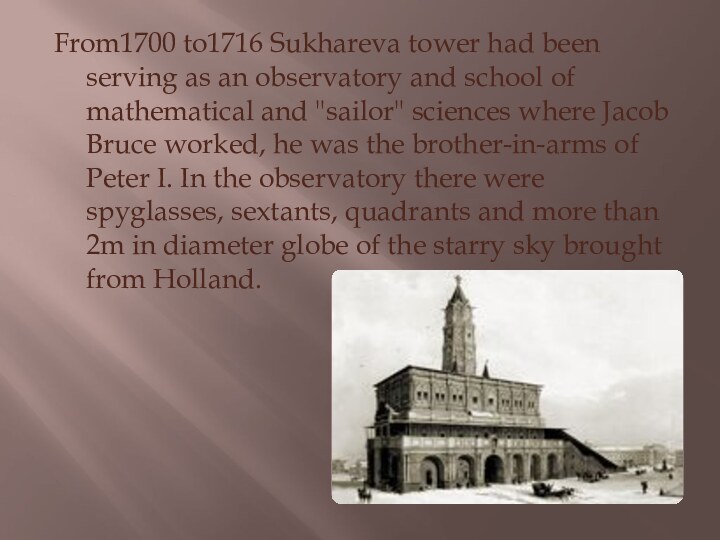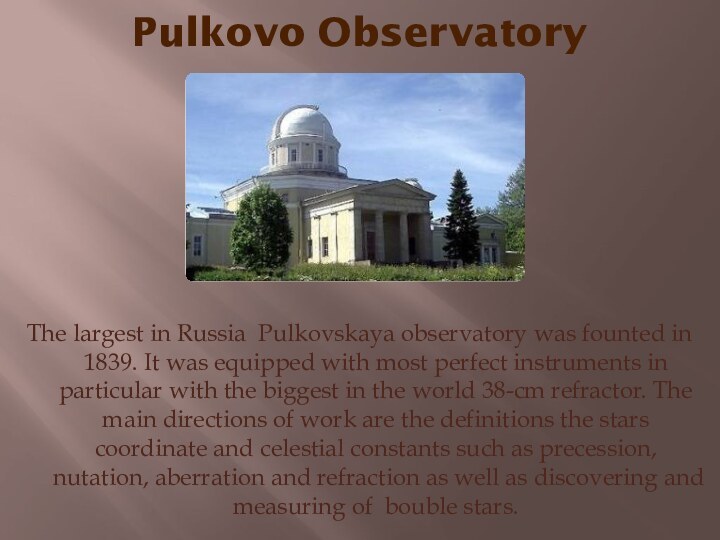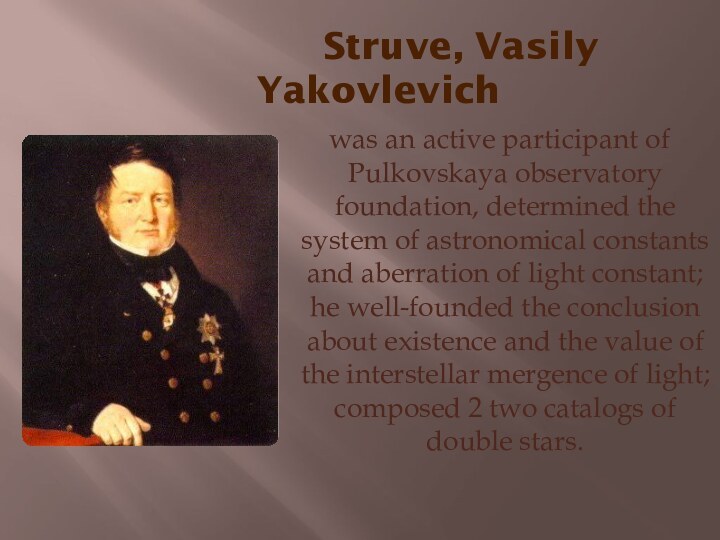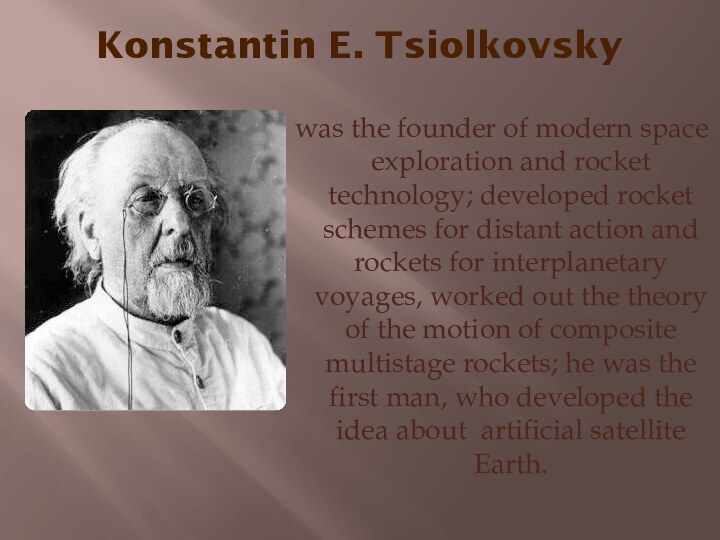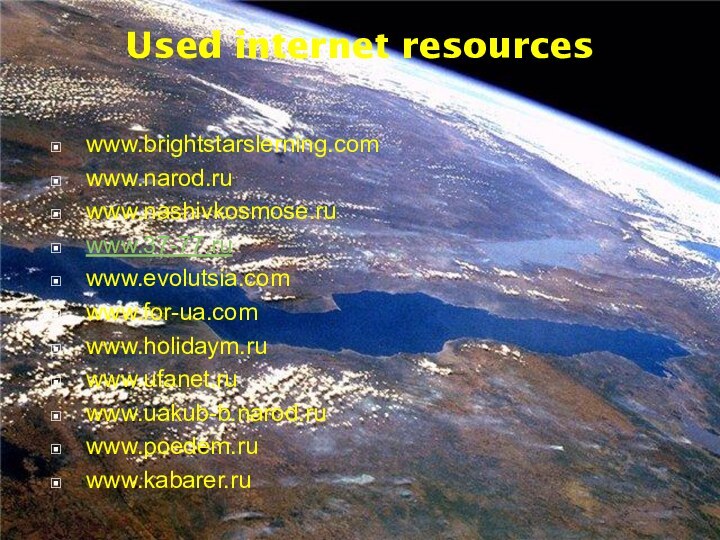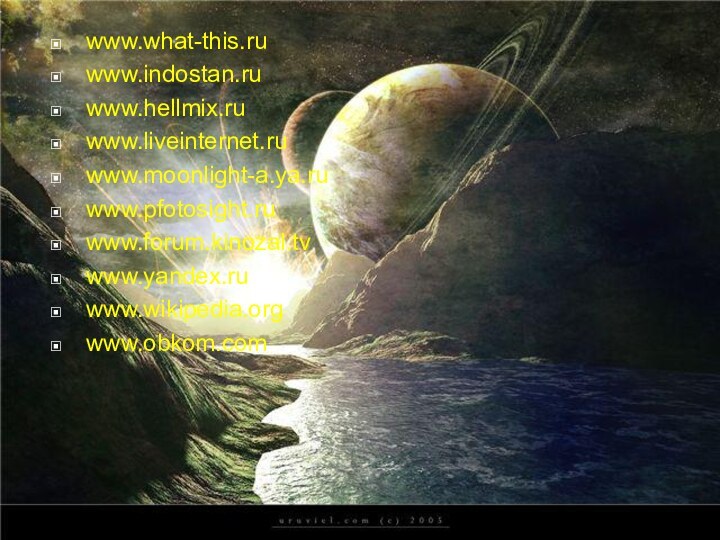Слайд 2
"Any animal won`t look at
the heavens...
Only that ridiculous creature – human can
waste the time
gazing up into the sky ".
Herbert Wells
Слайд 3
How great is the
view of the sky! Billions of glimmering stats attract
the attention of curios scientists.
Слайд 4
For thousands of years people
had been spending nights by the bonfire gazing up
into the starry sky and then they noticed that stars were in the constant positions to each other.
Слайд 5
Why is it glowing dots do not fall
every night, taking their place on the celestial sphere?
Why is the sun and moon appear always on the one hand, and disappear on the other?
Слайд 6
Some people just watched, others tried to give
everything in its most authentic, in their opinion, the
explanation. Later, people learned to write and thus leave their children for the observation that they did not start all over again.
Слайд 7
Man found out a few remarkable figures
of constellations.
Слайд 8
The first lunar calendar
was already composed 2000 years ago.
Слайд 9
Ancient people connected agriculture
with the seasons which were dependent on the positions
of stars, the Sun, the Moon…
The first ancient
astronomers and scientists
were priests.
Слайд 10
Religious views
The main gods of all ancient
religions of the world were inextricably connected with the
Sun, planets and celestial phenomena.
World religions are based on the statement that
the universe is a living creature - the ancestor of everything alive. The visible in the sky planets are identified with the goods representing the definite spheres our life.
Слайд 12
-"Stars worship" of Egypt;
- Greek and Roman
god`s pantheon and celebrations of undefeated Sun;
- Buddhism;
- Induizm;
- Persian worship of Mitro,the God of the Sun.
All of them were based on that statement about the universe.
Слайд 13
The belief that the universe is like a
multistage construction, common in the biblical, Babylonian and Islamic
cosmologies.
Слайд 14
Seven heavenly spheres of Muslim views
Drawing of the
upper world Dayak tribe ngadzhu
Слайд 15
All of them were based
on that statement about the universe. The annual change
of the position of the Sun in the sky is mentioned in the Bible, in the Old Testament in the Iove`s book.
Слайд 16
The first Ancient Observatory –
megaliths
Menhirs
Dolmen
Слайд 17
Sunworshippers believed they had to
please the Sun if they didn`t want it to
stop to illuminating the Earth.
Слайд 18
So appeared the first temples
which had circle-shaped foundation. They played the role of the
first calendar, clock and observatories.
Stonehenge, England, 4000 BC
Слайд 19
These temples were
the
first calendars
and clock
and observatories.
Слайд 20
The creation of the first
astronomical observatories began in the earliest period of human
history.
Ancient observatories were situated in Assyria, Babel, China, Egypt, Persia, India, Mexico and Peru.
Слайд 21
Ancient Observatory
"Horse-stone", Ukraine
Слайд 22
Instruments for measurement were huge stones
Stownhadge
Слайд 25
Ancient Brazilian Observatory
(2000 BC)
Слайд 29
Observatory Jantar Mantar, India
Слайд 30
Ancient Beijing Observatory in 1442
Слайд 31
Ulugbek Observatory
In the city of Samarkand
(Uzbekistan) in the 15 th century astronomer and scientist
Ulugbek creates the famous observatory. The scientist was sky catalog, which describes the 1018 stars.
Слайд 32
The main instrument of the observatory - a
giant (in a radius of 40 meters) quadrant to
measure the angular distances of stars and other luminaries.
Слайд 33
Astronomers had used modern
for that period of time devices until they invented
a spyglass and a telescope.
Octant
Sextant
Слайд 34
The first observatory of the modern type were
built in Europe since 13 century
State Observatory of Paris
in 1667
Greenwich Observatory in England in 1675
end of 17th century the russian archbishop Kholmogorsky Afanasy
used the bell-tower of the stone cathedral as an observation tower in 1692.
Слайд 36
From1700 to1716 Sukhareva tower had been serving as
an observatory and school of mathematical and "sailor" sciences
where Jacob Bruce worked, he was the brother-in-arms of Peter I. In the observatory there were spyglasses, sextants, quadrants and more than 2m in diameter globe of the starry sky brought from Holland.
Слайд 37
Pulkovo Observatory
The largest in Russia Pulkovskaya observatory was
founted in 1839. It was equipped with most perfect
instruments in particular with the biggest in the world 38-cm refractor. The main directions of work are the definitions the stars coordinate and celestial constants such as precession, nutation, aberration and refraction as well as discovering and measuring of bouble stars.
Слайд 38
As is enormous contribution to the development of
science of the structure of the universe of Greek
and Roman scholars
- Anaxagoras (the birth of universe – «onest mixture»),
- Pyphagor (divided the mathematical harmony of space)
- Aristotel (the person «stopping the Earth»)
- Fales Miletskii,
- Platon
- Archimedes (measuring of sky)
- Evaox (the first theory of planets` motion)
- Eratosfen (the measurement of the Earth)
- Klavdii Ptolemei.
Слайд 39
Johannes Kepler
formulated 3 laws of the
planetary motion and the law of planetary kinematics; he
derived the «Kepler`s equation» for determining the position of celestial bodies.
Dzherdano Bruno
worked out the theory about 5 elements and supposed possibility of the life on other planets.
Tycho Brahe
made exact solar tables and measured the year length with the mistake less than a second; observed ultranew star in the Cassiopeia constellation; stuck to idea of extraterrestrial origin of comets, recognised the slope change of the moon orbit to ecliptic.
Galileo
In 1608, Galileo and his simple telescope brought the heavens into focus, setting the stage for modern astronomy.
Nicolaus Copernicus
was the author of the heliocentric system and began the first scientific revolution
Edmund Halley
discovered the large Jupiter and Saturn inequality; derived orbits of 24 comets; discovered stars` motion and explored nebulars.
Lomonosov, Mikhail Vasilyevich
Discovered the atmosphere and a luminous rim on Venus; built the new optic devices for celestial observations.
Struve, Vasily Yakovlevich
was an active participant of Pulkovskaya observatory foundation, determined the system of astronomical constants and aberration of light constant; he well-founded the conclusion about existence and the value of the interstellar mergence of light; composed 2 two catalogs of double stars.
Слайд 47
Bredikhin Fedor Aleksandrovich
systematicаlly observed the Sun`s
chromesphere, took photos of sunspots; investigated the surface of the Moon, Mars and Jupiter; explored the chemical composition of gas nebulas.
Слайд 48
Konstantin E. Tsiolkovsky
. was the
founder of modern space exploration and rocket technology; developed rocket schemes for distant action and rockets for interplanetary voyages, worked out the theory of the motion of composite multistage rockets; he was the first man, who developed the idea about artificial satellite Earth.
Sergei Pavlovich Korolev
was the founder of aerospace technology and the USSR rocket weapon production; the founder of practical space. He was the «father» of practical astronautical science. Korolev heated the creation of the first soviet strategic rocket and was the top designer of the first in the human history artifical satellite of the Earth.
Слайд 50
The new era of space exploration began when
the first artificial satellite of the Earth was launched
into space.
Слайд 51
Used internet resources
www.brightstarslerning.com
www.narod.ru
www.nashivkosmose.ru
www.37-77.ru
www.evolutsia.com
www.for-ua.com
www.holidaym.ru
www.ufanet.ru
www.uakub-b.narod.ru
www.poedem.ru
www.kabarer.ru



